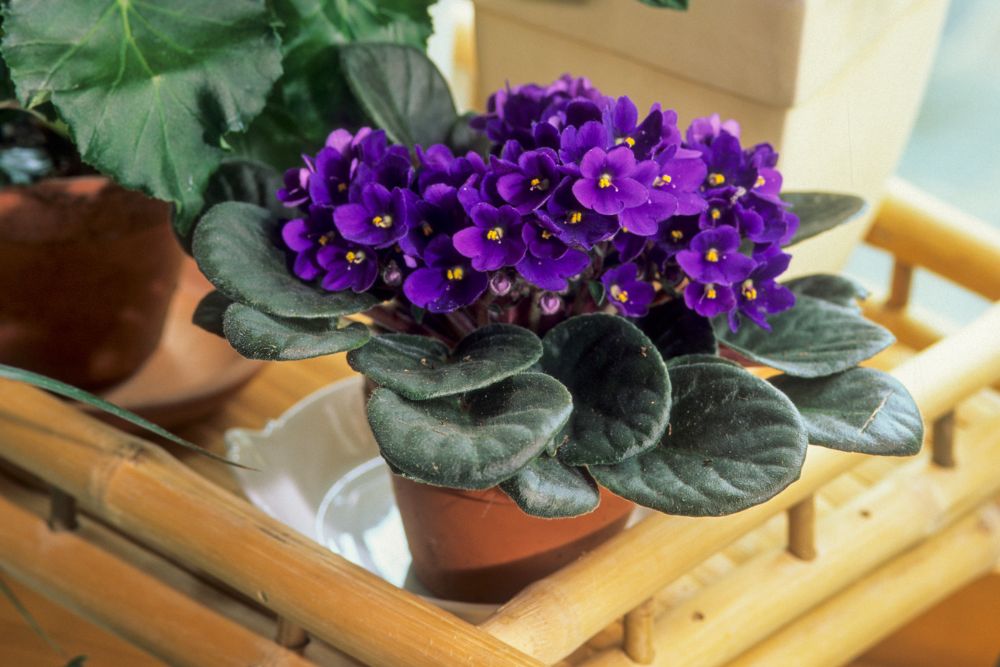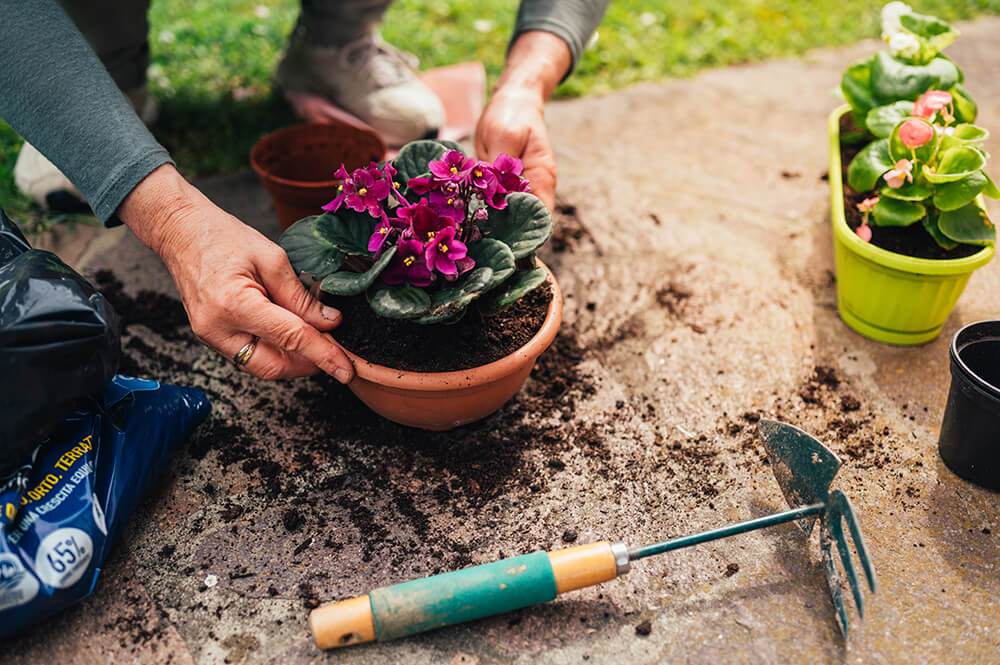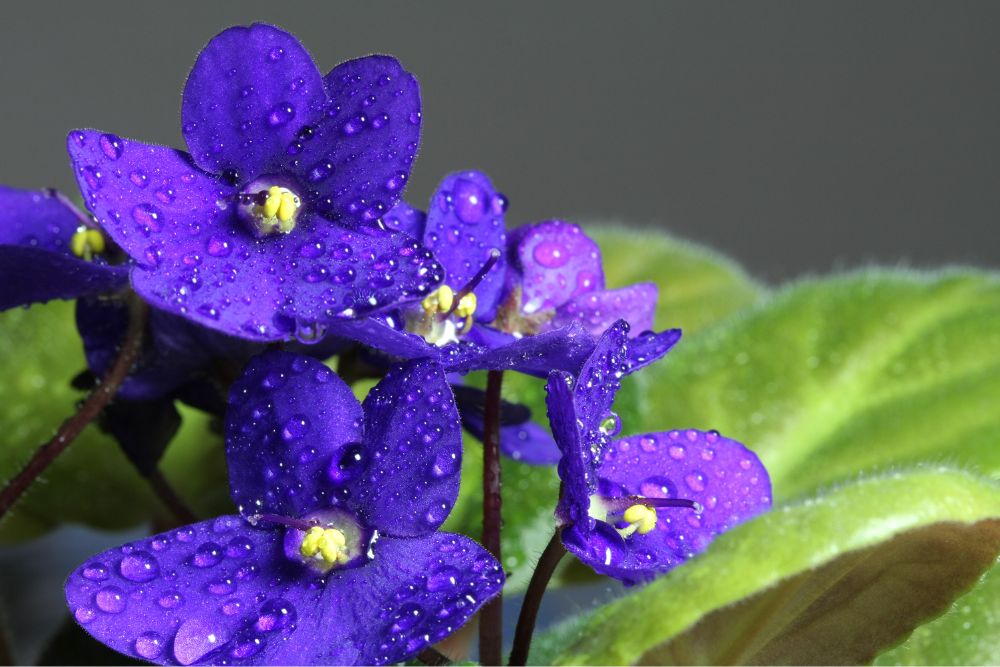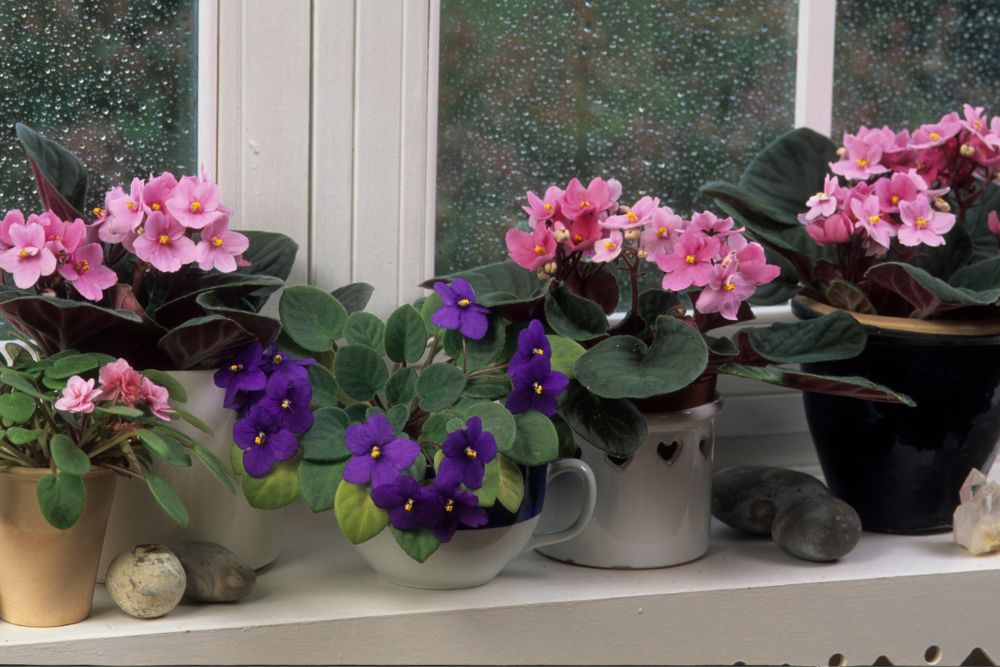The African violet is not actually a violet at all. Yes, they produce mauve petals, alluding to violets. Nonetheless, the African violet is of the Genus Streptocarpus, and common violets are of the Viola genus. They look a great deal alike, so if you like violets in general, this plant might be an interesting item for your indoor garden. Despite rumors otherwise, learning to grow and care for African violets isn’t overly complex, either.
What is African Violet?
There are more than 16,000 strains of African violets, so you won’t want for variety. These flowers rank among the most popular houseplants in the world, with good cause. People love them for their delicate rosette leaves that frame sweet blossoms as if placed carefully by an artist. The foliage is evergreen, and the plants flower more than once a year, so you’ll often have a plant in full or partial bloom.
African violets have gotten some bad press as being difficult to grow. The accusations are false. If you follow some basic rules, you can successfully grow African violets indoors. Proper watering and drainage are the two biggies to keep your plant healthy.
The African violets are an ideal size, rarely expanding beyond the size of a dinner plate.
Key Takeaways
- African Violets are among the best choices in plants for low-light conditions.
- While you think of violets as, well, “violet,” this flower comes in white, pink, red, and blue too.
- The trick to growing African violets is three-fold: proper sunlight, good air circulation, and moist conditions.
- Some African violets need more light than others. Check the details before you buy.
Superstition has it that keeping an African Violet plant in your home attracts bounty and makes for a happy, peaceful home. Put a few leaves in your wallet for growing financial stability.
Types of African Violets
The original African violet appeared in 1893, in Germany. It didn’t take long for nursery growers to notice differences between various plants. Over time, this led to double, frilled, and uniquely shaped flowers. Here are a few for your consideration:
- Aroma of Summer: An African violet with a light, pleasant scent. The plant has dark green foliage showing off the pink and white petals.
- Hawaiian Pearl: The distinguishing characteristic of this African violet is the flower. It’s a double star, colored in ivory with a rosy colored band. Add that to dark green foliage, and this can be a show-stopper.
- High School Sweetheart: A brazen African violet has intense pink blossoms against dark foliage. It’s an eye-catcher.
- Little Maya: As the name implies, this is a diminutive growing no more than 6 inches high. The plant has heart-shaped leaves and semi-double flowers. The color is outstanding, being such a dark red that it appears black.
- Lonestar Snowstorm: Tiny white blossom top leaves that are dark green in the center, fading outward to a band of white. The flowers on this violet have frilled edges, making it look lace-like.
- Myakka Trail: This African violet has purple ruffled leaves. It’s popular because its blossoms are long-lasting, and the plant blossoms year-round.
- Peacock Cottage: Another showy African violet. This one has ruffled crimson flowers outlined in white. At the center, bright yellow stamens gather playfully.
- Persian Prince: This looks more like a traditional violet with a semi-double, medium blue to purple flowers. The leaves are medium green and scalloped.
- Summer Twilight: A relative newcomer among cultivars (1996), this is a stunning African violet to add to your collection. It has compact purple flowers edged in white.
The Perfect Mother’s Day Gift: In African cultures, the African violets represent feminine power and fortification. The connection between mothers and motherhood remains. African violets are a common gift to mothers, representing love and gratitude. Superstition has it that if you gift the plant with a candle and the recipient lights it, luck will follow.

How to Plant African Violet
Planting African violets is remarkably simple. Get an African violet potting soil if possible. If not, use an all-purpose mix. Pick out a small pot with excellent drainage, and place the soil loosely therein.
Now, tuck your plant into the soil and give it some water. Keep the plant at the same level in the soil as it was originally. NEVER bury an African violet’s crown.
It’s ok to keep an African violet in the original pot for several years. When African violets are pot-bound, they blossom more.
Repotting
Your African violet will tell you when it needs a new pot. The leaves start to fall and appear overcrowded. Also, the roots protrude from the soil. Time for a transplant!
Move the plant into a pot one size up from the original with drainage holes. As with your initial planting, use fresh African violet soil or all-purpose potting soil. Place some soil at the bottom of the container. Lift the whole plant into the new pot, taking care to avoid damaging the roots. Do not put them further down in the soil than before.
In general, African violets require repotting once a year.
Can I Grow my African Violet Outside?
African violets don’t get along with outdoor living. They’re too sensitive to environmental changes, which are wholly unpredictable. Unless you have a rainforest nearby, where the conditions aren’t too sunny or wet, too hot or cold, think indoors. If you want to see your African violet outdoors for decoration, make sure the temperature is above 65 F. Also, be aware that moving the plant into the open air exposes it to a higher risk of pests.

Books on dream interpretation tell us that having a dream of African violets portend serendipity coming your way. If you face struggles, recovery, and rejuvenation are right around the corner. Finally, African violets are a reminder of life’s delicate beauty. Stop and smell the roses… um, violets!
Caring for Your African Violet
Your African Violet prefers temperatures hovering above 65 F. Keep them away from cold, drafty areas. Use a small, clean paintbrush and dust the dirt off the fuzzy leaves. Find a spot in the home that’s bright but not directly lit. Direct sunlight can burn their leaves. Think about an eastern-facing widow. If you notice the stems becoming leggy, it means the plant needs more light. Paling leaves mean too much light.
Lightly moist soil suits an African violet plant. Too much water leads to root rot. Fungal spots can occur when it receives too much humidity. This is why you water your plants at the bottom, not overhead.
Only fertilize your African violet when it seems pale or the leaves begin to yellow. Take care with fertilizing, as it’s easy to use too much. A liquid 20-20-20 mix is ideal every four to six weeks. Apply at the soil level.
TIP: Always use room-temperature water for your African violet. When the water is too cold, it can leave marks on the plant.

Common Problems with African Violets
When people begin gardening African violets, they often struggle with getting the plant to flower. The reason is simple. They’re a tad persnickety. Make sure the proper growing conditions exist. Make sure they get 14 hours of indirect light and 8 hours of darkness daily.
A second common problem is over-fertilizing. You want the right food in the right proportions.
Rectifying these problems doesn’t require much fuss on your part. Care for your African violets on their own terms. The reward for your efforts is right in front of you-gorgeous plants.
Grounding the Water: African violets don’t like water on their leaves. It will create spotting. Instead, always water at ground level, or consider a self-watering pot.
African Violet Pests and Diseases

The best defense for protecting your African violet is always (did we say ALWAYS?) monitoring the water levels. It deters things like fungi and some insects like wet soil.
Pests
Aphids, spider mites, and mealy bugs all love the taste of African violets. You can wash your plant’s leaves gently with soapy warm water. Or try neem oil. Harsh infestations require insecticide.
Diseases
Botrytis Blight appears as a gray mold on the plants. The flowers may appear water-soaked and show signs of decay. Make efforts to reduce the humidity around your African violet and make sure it’s getting enough air circulation.
Root and Crown Rot: Leaves and stems in contact with the soil may develop rot. Sometimes it can affect a plant’s entire stem. Replant in sterilized soil, but cut back the diseased parts first.
Unlike many other household plants, African violets are pet approved. They pose no threat to cats or dogs. The only issue that may arise comes from chemicals in your plant’s fertilizer.
How to Successfully Grow African Violet
There is something nostalgic about African violets. They feel warm and welcoming and don’t overshadow other plants in your indoor garden. So long as you monitor your plants for potential problems, they’re easy to grow successfully. The nicest thing about African violets is that they bloom again and again, nearly guaranteeing year-round charm.
Frequently Asked Questions About African Violet Care
How do I keep my African violet happy?
Start with the right potting mix. You need something porous so the plant’s roots have access to air. If your home is between 65 °F and 80 °F throughout the day, the temperature is just fine! If you have cold air vents or fans, however, keep this plant away from them.
Where is the best place to put an African violet?
Grow your plants in a well-lit location with indirect lighting. If it’s possible to get this by putting your violet three feet away from a south-facing window, it’s ideal. The alternative is a west-facing window. When you struggle for location, try a 40-watt grow light poised about a foot above the plant.
Does coffee help African violets?
The slight acidity in coffee grounds along with nitrogen can support healthy foliage. But only use them once in a while. Think of it as a surprise gift every other month. Just sprinkle it evenly over the soil.
Should I mist my African violets?
It’s best to avoid misting your African violet. Dampness on the leaves can create a space for disease, and the droplets show up as leaf spots. One alternative is having a humidifier nearby. Alternatively, set the pot on a tray filled with gravel and water (you can make this a decorative accent).
Do African violets like to be wet?
Questions about how much watering African violets come up again and again. So, you’re not alone in trying to find just the right amount. Periodically check the top of the soil in the plant’s pot. If it feels dry, give the plant water. Basically, you want the plant drying out between waterings. Overwatering is a disaster, potentially killing your African Violet. The roots cannot withstand soggy soil. Remember to water from the bottom of the plant using lukewarm water. Avoid getting water on the leaves. Spots of water left in sunlight create leaf spots, ruining some of your plant’s presentation.



